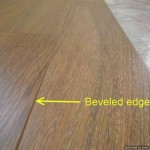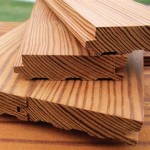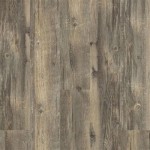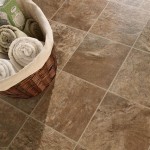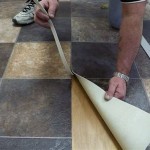Laminate Flooring vs. Engineered Wood: Essential Aspects for Comparison
Choosing the right flooring for your home can be overwhelming, especially when faced with options like laminate flooring and engineered wood. Understanding the key differences between these materials is crucial for making an informed decision. Here's a comprehensive comparison to help you navigate the choices:
Construction
Laminate flooring is made from layers of high-density fiberboard (HDF), which is covered with a decorative layer and a protective wear layer. Engineered wood, on the other hand, comprises multiple layers of plywood or solid wood with a top layer of genuine hardwood. This construction provides a more natural wood look and feel.
Durability
Laminate flooring is highly durable and resistant to scratches, dents, and fading. Its wear layer protects against everyday wear and tear, making it suitable for high-traffic areas. Engineered wood is also durable, but it can be scratched or dented more easily than laminate. However, it can be refinished multiple times to restore its appearance.
Water Resistance
Laminate flooring is generally not water-resistant, meaning it can swell or delaminate if exposed to moisture. Engineered wood is more water-resistant, thanks to its plywood base, but prolonged exposure to water should still be avoided.
Installation
Laminate flooring can be installed as a floating floor, which means it can be clicked together without the need for glue. Engineered wood requires professional installation and can be nailed, stapled, or glued down.
Cost
Laminate flooring is generally more affordable than engineered wood. Its versatility and ease of installation contribute to lower costs. Engineered wood, being made from real wood, tends to be more expensive but offers a higher value in terms of aesthetics and durability.
Aesthetic Appeal
Laminate flooring comes in a wide range of styles and patterns that mimic the look of wood, stone, and tile. Engineered wood offers a true hardwood appearance with natural grain and texture. Both materials can complement various interior design styles.
Environmental Impact
Laminate flooring is typically made from recycled materials, making it a more eco-friendly option. Engineered wood is sourced from real wood, so its environmental impact depends on the sustainability practices of the manufacturer.
Final Verdict
The choice between laminate flooring and engineered wood depends on your specific needs and preferences. Consider the traffic level, budget, desired aesthetic, and moisture resistance when making your decision. Laminate flooring offers durability, affordability, and ease of installation, while engineered wood provides a natural wood appearance and can be refinished for longevity. Both materials can elevate the look and feel of your home, but understanding their differences will help you make the right choice for your space.

Engineered Flooring Vs Laminate Everything You Need To Know Forbes Home

Engineered Hardwood Vs Laminate

Solid Vs Engineered Laminate What S The Difference American Heritage Hardwood Flooring

Engineered Wood Vs Laminate Flooring What S The Difference Greyspace

Laminate Engineered Wood Real Flooring What S The Difference

Choosing Between Laminate And Engineered Wood Flooring Jg

Hardwood Vs Engineered Wood Flooring Which Is Best For You Forbes Home

Engineered Hardwood Vs Laminate

Engineered Hardwood Vs Laminate Flooring What S The Difference

Engineered Hardwood Vs Laminate Floor Choice
Related Posts


